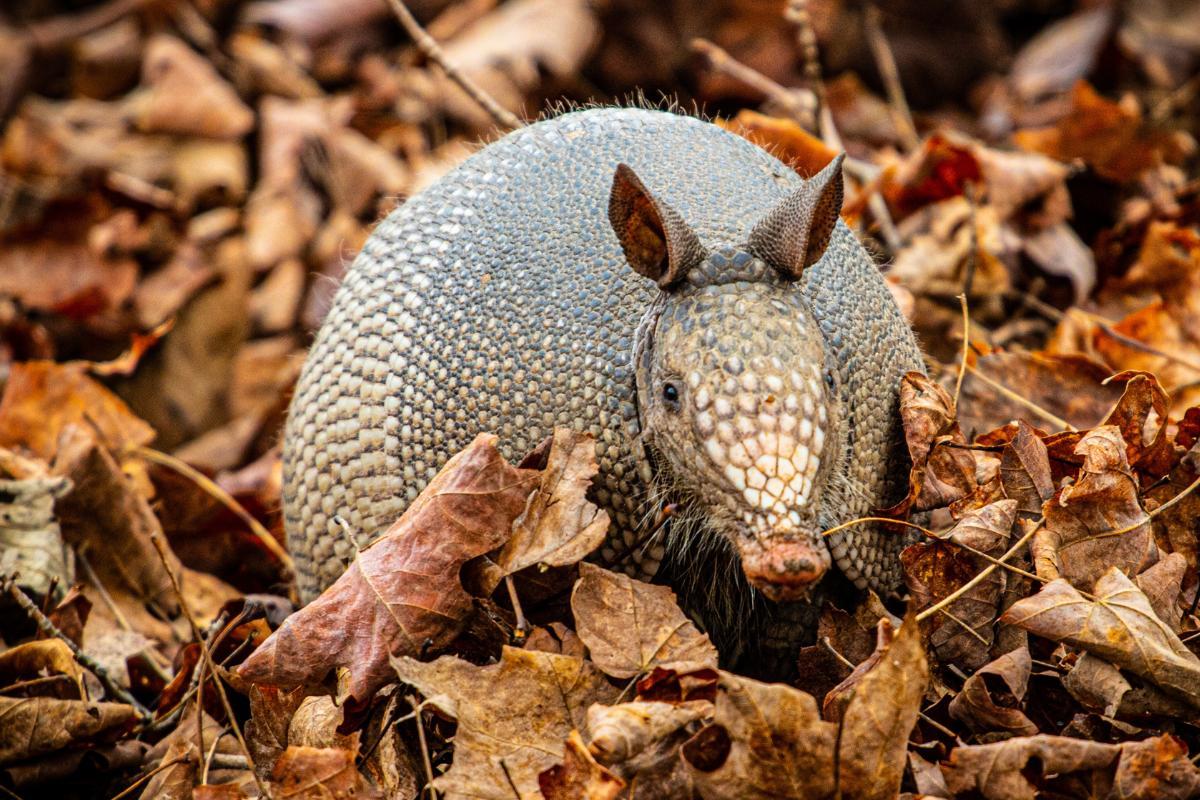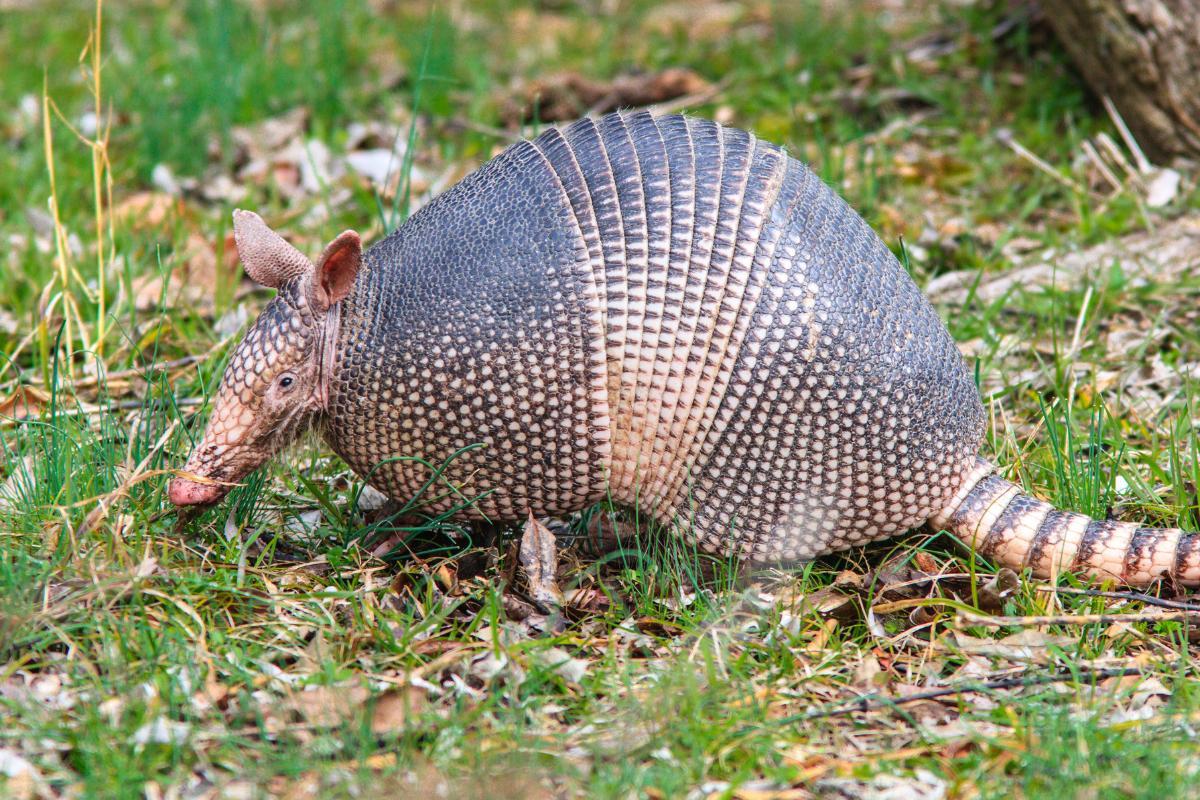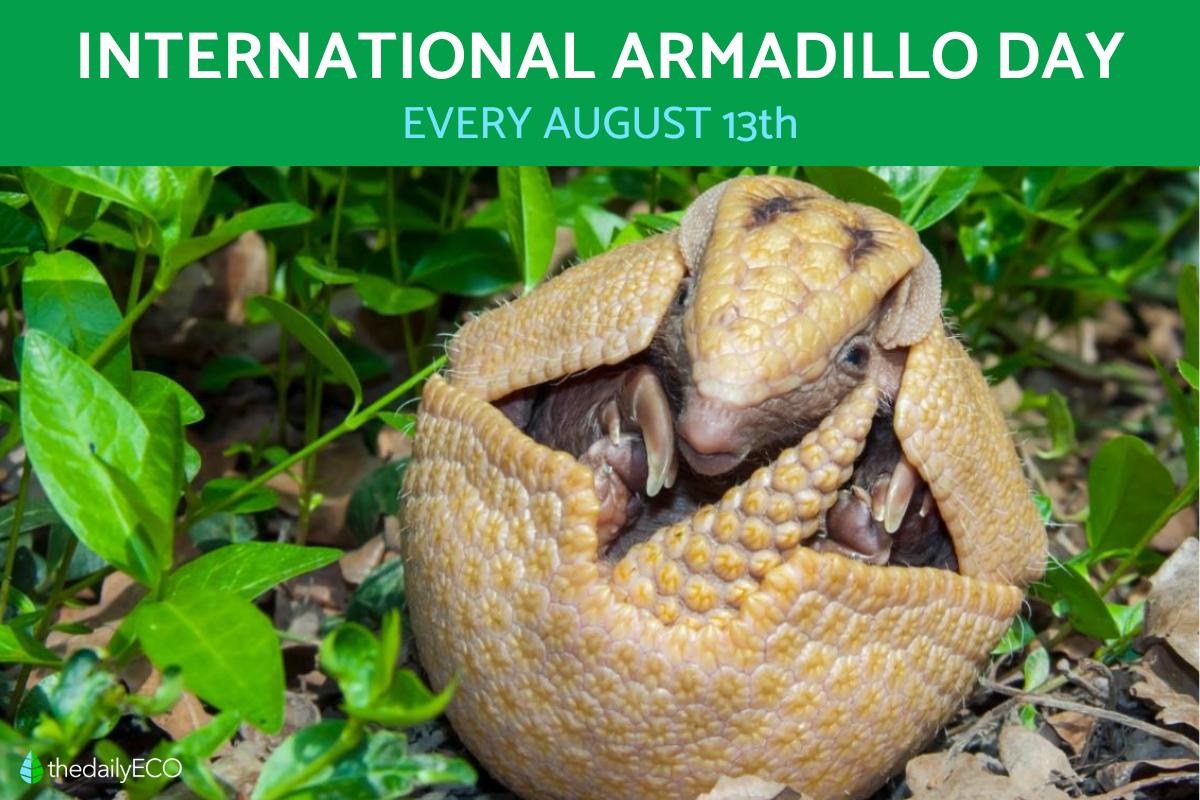Why Are Giant Armadillos Endangered?


Although they may not appear very furry, armadillos are a type of mammal. As the name suggests, the giant armadillo is the largest armadillo species, but their larger size doesn't mean they are better protected against threats. Characterized by having a body covered by bony plates called scutes, the giant armadillo uses them to protect against predators in the wild. Unfortunately, this isn't enough to protect them against existential threats such as habitat loss, road accidents, illegal hunting, environmental pollution, diseases and climate change.
In this article from thedailyECO, we ask why is the giant armadillo endangered? We look in more detail about what threats to the armadillo exists and what we can do to help this animal survive for future generations.
Why is the giant armadillo going extinct?
Before we look at the threats to the giant armadillo, it is first important to know the official conservation status of the giant armadillo by the International Union for Conservation of Nature (IUCN) is ‘Vulnerable’. However, there are already parts of the world where once abundant armadillo populations have been decimated and even areas where they are now extinct. This means they are in danger of extinction if the current situation continues.
The current threats to giant armadillos include:
Habitat loss
The loss and fragmentation of the natural habitats of armadillos is one of the main threats facing these species. Agricultural expansion, urbanization and indiscriminate forest clearing have significantly reduced the areas available for their survival. Armadillos depend on a variety of habitats, from forests and jungles to semi-desert areas and grasslands. They rely on these diverse ecosystems for food and shelter.
The destruction of these sites has led to population declines. As stated above, local extinction of certain armadillo species has occurred. In addition, habitat fragmentation can isolate groups of individuals, hampering reproduction and gene flow, weakening the resilience and genetic diversity of giant armadillo populations.
Road deaths
Giant armadillos are vulnerable to being hit by vehicles is another significant factor contributing to their endangerment. These animals are known for their slow movement and road-crossing behavior in search of food or to move between areas.
In urban and rural areas, where roads interfere with their travel routes, armadillos are at high risk of being hit by moving vehicles. Not only do road accidents cause direct deaths, but they also reduce the reproductive population, further affecting their ability to recover from other threats.
Hunting and illegal trafficking
In some regions, armadillos are subject to hunting and illegal trafficking. Hunting is driven by the demand for their meat as food, while their shells are used as decorative objects. They are even used to make musical instruments and crafts. Excessive hunting and illegal trade also disturb the ecological balance and threaten the biodiversity of the giant armadillo ecosystem.
Environmental pollution
Exposure to toxic chemicals and water and soil pollution negatively impact giant armadillos and their habitat. Pollution can reduce the availability of safe food and water sources for these animals, which can affect their health and reproductive capacity.
Diseases
Some species of armadillos are susceptible to diseases transmitted by other animals, posing a risk to both the armadillos themselves and human populations. For example, in some areas, armadillos can carry the bacteria that causes leprosy, something which has raised concerns and fears about these creatures.
Climate change
Climate change and extreme weather events also threaten the survival of armadillos. These changes can affect distribution and behavior patterns of armadillos, modifying the availability of food resources and shelters. For example, rising temperatures can alter the activity cycles of insects, which constitute an important part of the giant armadillo diet.
Giant armadillos are not the only animal which faces threats to their survival. Learn about others with our articles on shark species in danger of extinction and crocodile species in danger of extinction.

Characteristics of the giant armadillo
Now we know why giant armadillos are in danger of extinction, we share some facts about these fascinating animals:
- An adult armadillo can weigh between 41 to 72 lb.
- The body length of the armadillo can reach 30 to 39", not including their tail.
- Its head is small and thick.
- Almost all of their body is covered with polygonal plates.
- The ears are set far apart and have armor plates between them.
- The face is conical, hairless and flesh-colored.
- Giant armadillo mouths have about 100 teeth, but they are all the same size.
- Although its belly is bare, the rest of its body is covered by a flexible shell made up of small grey plates with a yellowish lower edge. They are arranged transversely and also cover the tail and legs.
- It has very large and strong claws, with the central claw measuring up to 8" long.
- Their tongue secretes a sticky substance that allows them to catch insects, their main source of food.
- Its sense of smell is very good, but their other senses are not as well developed. In fact, it does not distinguish colors, something which is not as important since they are a mostly nocturnal animal.
- Giant armadillos can be found throughout the South American continent. Their populations range from Colombia to northern Argentina, passing through Venezuela and Guyana. Distributed mainly in the Amazon River basin, their preferred habitats are tropical forests, floodplains and savannas. Giant armadillos can adapt to a variety of ecosystems. They have even been known to live at altitudes of over 500 meters.
- Regardless of the habitat that surrounds them, all armadillos spend most of their lives in the underground burrows they build.
Discover more about another mammal that lives mainly underground with our article on the different types of moles.
International Armadillo Day
International Armadillo Day is celebrated every August 13th. Its purpose to promote the value of an animal species with very special characteristics. It is an opportunity to highlight the importance of caring for this endangered animal and protecting them from extinction.
The celebration of days dedicated to raising awareness and protecting animal species provides an opportunity to educate the population about the importance of biodiversity conservation. It helps to promote concrete actions to preserve these species and their natural habitats.
Discover the three types of species biodiversity with our related article.

How to help the endangered armadillo
Helping the endangered giant armadillo is a task that requires the effort and collaboration of global communities at all levels. This includes governments and environmental organizations, as well as local communities and individual citizens. Here are some actions we can take to contribute to the protection and conservation of the giant armadillo:
- Habitat conservation: support and promote initiatives that protect the armadillo's natural habitats.
- Respect on the road: reduce collisions with armadillos and other wildlife by driving responsibly. Pay attention to wildlife warning signs and reduce speed in areas where armadillos are known to cross the road.
- Do not hunt or traffic: avoid the purchase and consumption of products made from armadillo parts, such as their meat or shells. In addition, report any hunting activity and illegal trafficking of armadillos to the relevant authorities.
- Education and awareness: participate in awareness and education campaigns on the importance of protecting armadillos and biodiversity in general. Inform others about the threats these species face and how we can help conserve them. This is why days like the International Armadillo Day can be useful.
- Research support: contribute to or support scientific research projects that study the ecology, behavior and biology of armadillos.
- Rehabilitation and rescue: if you encounter an injured or endangered armadillo, contact local authorities or wildlife rescue and rehabilitation organizations. Do not attempt to handle the animal yourself, as armadillos can carry diseases.
- Support organizations: contribute financially or as a volunteer to organizations dedicated to wildlife conservation, especially those that focus on the protection of armadillos.
- Policy influence: participate in initiatives to promote policies and regulations that protect armadillo habitat and regulate illegal hunting and trade of endangered species.
You already know why the giant armadillo is in danger of extinction and how to help conserve the species, but it is important to know what might happen if we do not meet this call. See an example of an animal which was not so fortunate with our article explaining why the great auk went extinct.
If you want to read similar articles to Why Are Giant Armadillos Endangered?, we recommend you visit our Animals in danger of extinction category.







